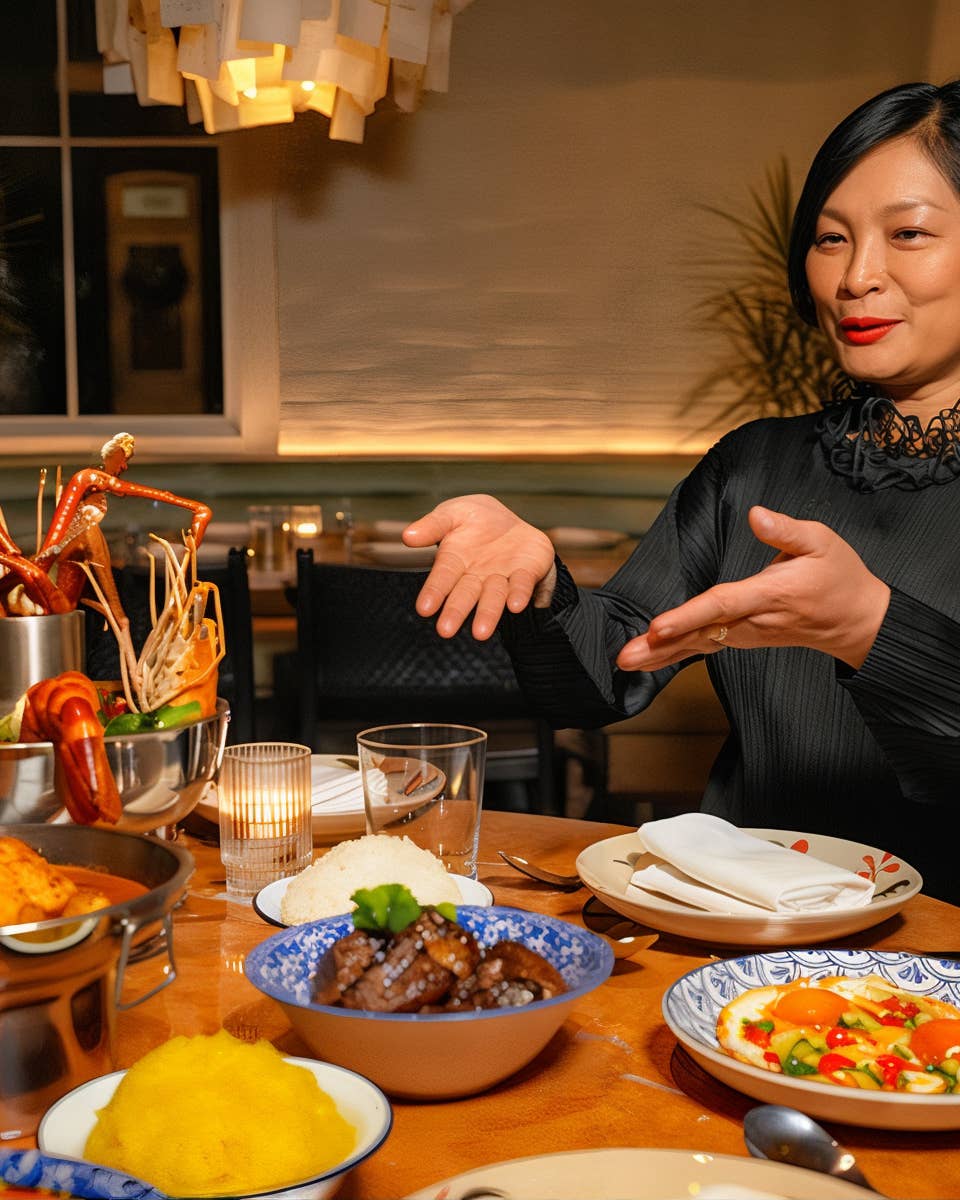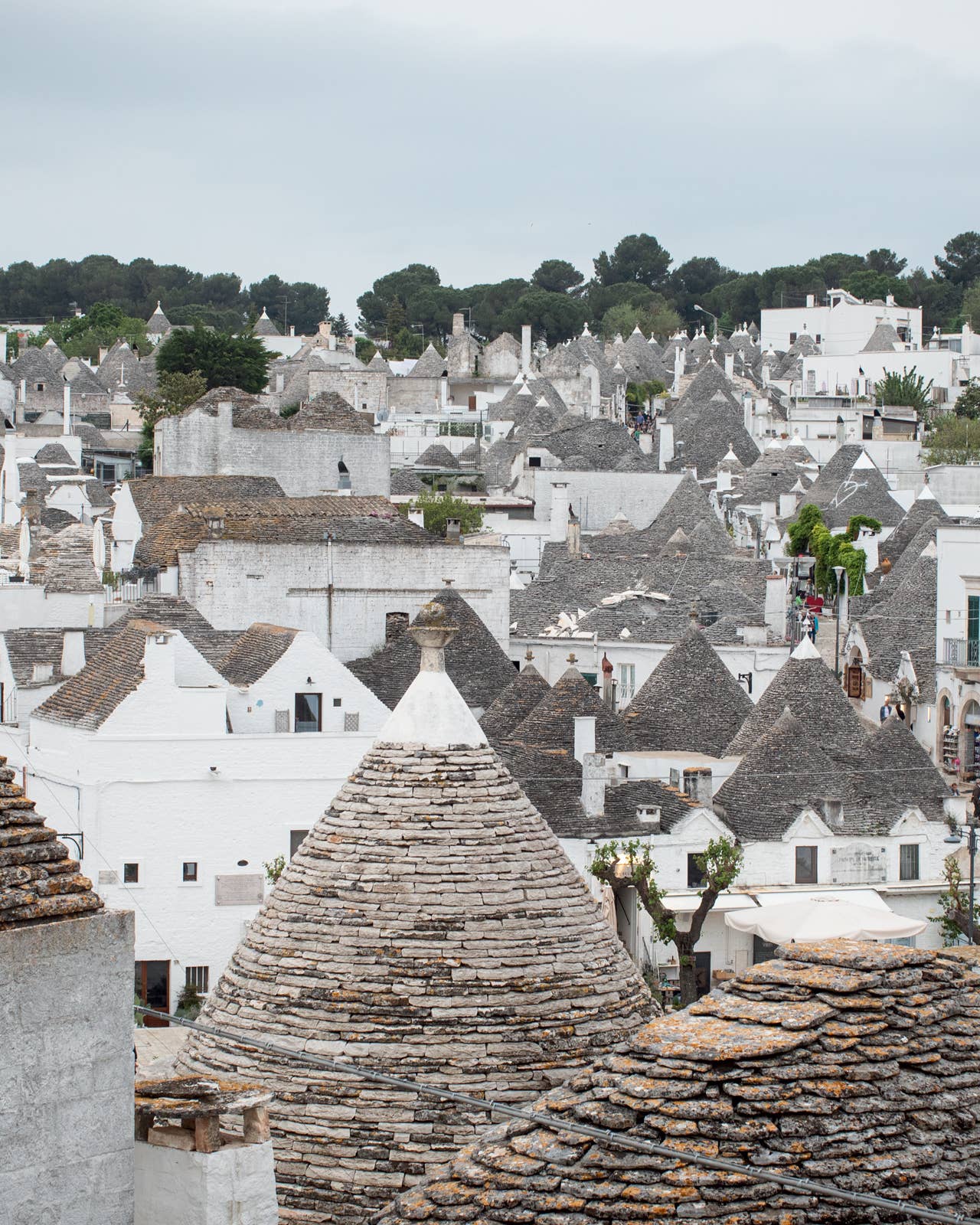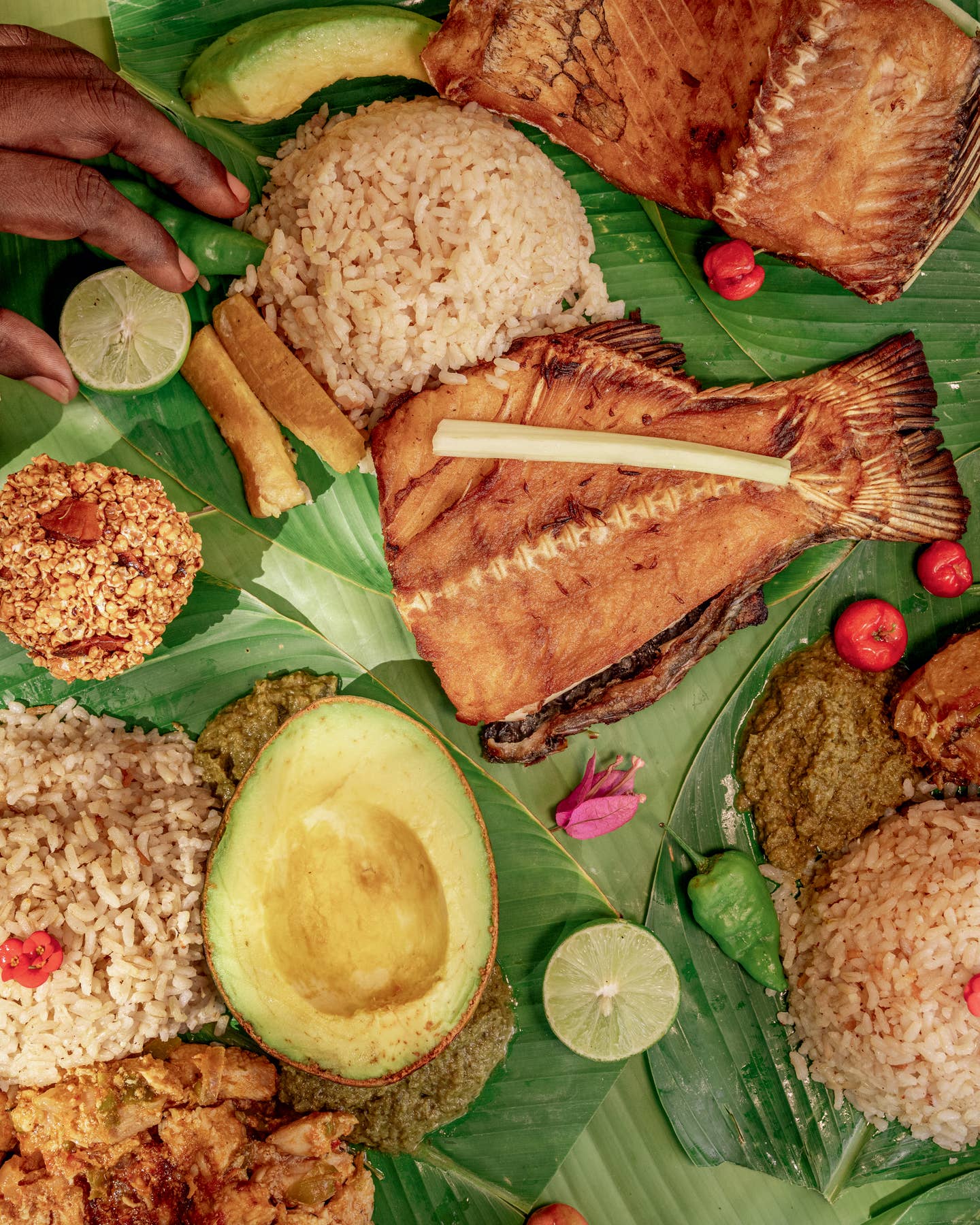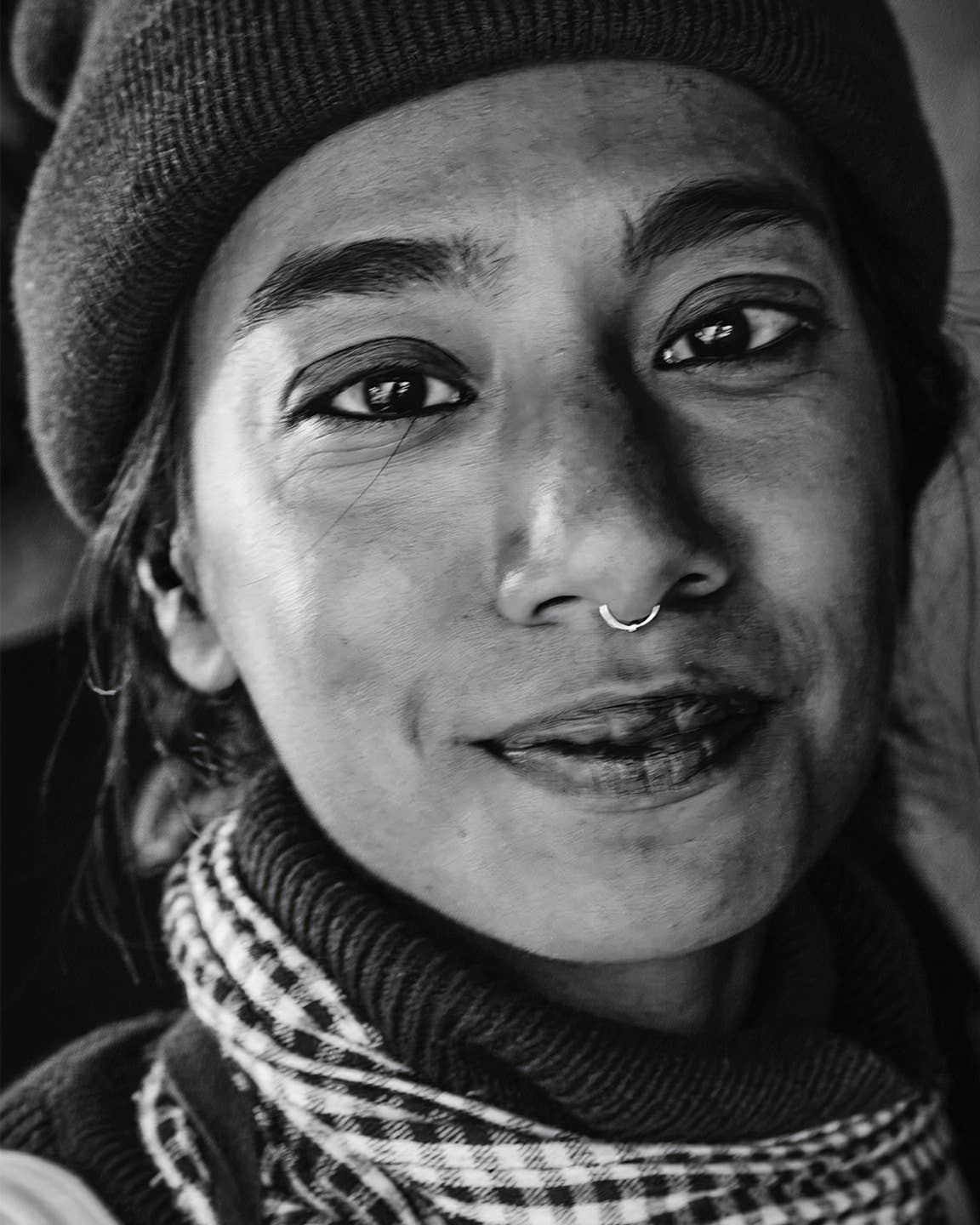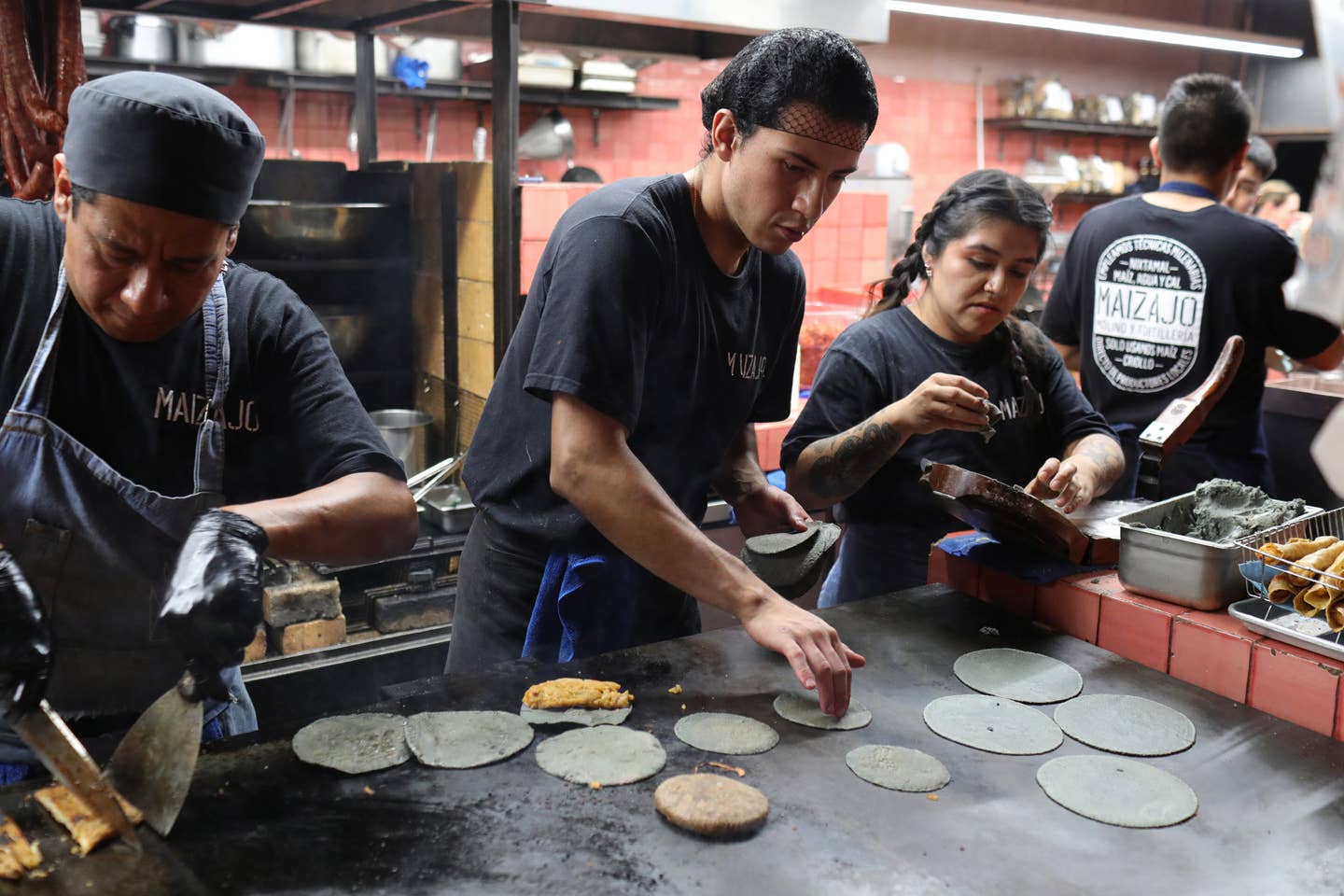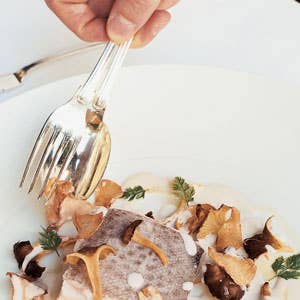
Catalan Contemporary Cooking
I'm having lunch with friends at the restaurant in northeastern Spain, a little south of the French border, that may fairly claim to have been the birthplace of contemporary Catalan cuisine and thus, by extension, one of the principal influences these days on modern food in general in Spain and beyond. It's probably not the restaurant you think it is, however.
On a precipitous hillside in Cala Montjoi, just outside the seaside resort town of Roses, at the three-star El Bulli, the now world-famous chef Ferran Adria and his team regularly astonish—and frequently delight—diners with food turned inside out and upside down, deconstructed and rebuilt—with cauliflower turned into couscous, pasta made out of consomme, foie gras in the form of candy, cocktails you eat with a spoon….
What my friends and I are devouring right now, though, at a very different establishment, in Figueres, about a dozen miles inland from Roses, is a combination of superbly made traditional Catalan dishes and innovative specialties that are far more obviously connected to the region and its old-style cookery than Adria's creations—more organic in conception, if you will—but just as dazzling in their way.
The restaurant in question is the Hotel Emporda. Opened in 1961 by a locally born chef named Josep Mercader, the place is today run by Jaume Subiros, the now deceased Mercader's son-in-law, who is both the chef and a quietly elegant presence in the big, warm, open dining room. In his very good hands today, we've been eating things like silky zucchini soup drizzled with sherry vinegar and hazelnut oil; a buttery compote of cepes; a brandada—in fact a very fine mousse—of fresh tuna (a fish for which the coast near here was once famous); a "paella" of lentils, with plenty of perfectly fresh scampi-like saltwater crayfish; exquisite squid, whole small ones, meaty, sweet, and tender, sauteed in typical Catalan style in olive oil with garlic and parsley; tiny tords (thrushes) roasted with garlic cloves, herbs, and black olives; and an intensely flavorful "tatin" of salty-sweet slow-cooked oxtail that seems firmly rooted in the local terroir (what little beef and veal is raised in Catalonia comes mostly from this region) even while it nods to France.
Mercader did two daring things when he opened his restaurant. The first was simply to give traditional Catalan dishes pride of place on his menu. With few exceptions, "fancy" restaurants like his in Catalonia served mostly French food; savory local specialties like sausage with white beans and seared salt cod with garlic and paprika were found mostly at modest fondes (inns). The second thing Mercader did—perhaps influenced by the beginnings of the new French cuisine across the border and certainly encouraged by his food-loving friends, among them Figueres-born artist Salvador Dali and the Catalan writer Josep Pla (who, says Subiros, "always liked things out of the ordinary")—was to begin reinventing the staples of Catalan cooking. In Mercader's kitchen, the traditional vegetable dish called escalivada—vegetables like eggplant, sweet peppers, and onions grilled or cooked in hot ashes, then sliced and dressed with olive oil and minced garlic—became a rich, flavorful mousse. From samfaina, a ratatouille-like vegetable melange, he made a delicate sauce for roast veal. He converted faves a la catalana, a rich dish of fava beans with blood sausage and bacon, into a refreshing salad flavored with mint. He fed a classic crema catalana, or creme brulee, into an ice cream maker to produce a frozen dessert of uncommon creamy richness and multilayered caramel flavor. In short, he reinterpreted Catalan cooking in ways that, at the time—and in those times, still dim with the political and cultural repression of the Franco era—must have seemed nearly as revolutionary as Adria's alchemy does today.
Ferran Adria is a remarkable chef, an innovator on an almost paradigm-shifting scale—but, as he would be the first to admit, he did not invent contemporary cooking here in Spain's famously creative Catalonia region (he became chef at El Bulli in 1983 but didn't make his first expeditions into the culinary unknown until the early 1990s), nor does his cuisine constitute Catalonia's only valid and compelling modern culinary idiom.
I discovered Catalan cuisine myself, both ancient and up-to-date, in 1985, on my first trip to Spain. Reading up on the country's food and wine, I happened upon a mention in British author Jan Read's tiny Simon and Schuster Pocket Guide to Spanish Wines (1983) of what was then called the Motel Ampurdan, in which Read hailed Josep Mercader as "founder of the new Catalan cuisine". Those few words sparked my interest—I hadn't known that there was even an old Catalan cuisine, much less a new one—and I ended up not only having a memorable lunch at the Motel but spending five days eating elsewhere in the region. Subsequently, greatly impressed with the quality and originality of the food I'd found, I wangled myself first a magazine assignment and then a book contract to write about the subject and devoted much of the next two years to eating in and around Catalonia.
Though traditional Catalan cooking has its simple side (sea-food and wild mushrooms, for instance, are often just roasted or sauteed, and bread rubbed with tomato and drizzled with olive oil is practically a staple of the cuisine), I quickly learned that it is also characterized by unusual, often medieval-sounding combinations of ingredients. Apples are stuffed with ground meat or pureed with garlic and olive oil into allioli; sauces are commonly flavored with a picada, a paste of garlic, parsley, fried bread, almonds (and/or hazelnuts, and/or pine nuts), and often chocolate; nutmeg and cinnamon are used as savory spices; a whole class of dishes called mar i muntanya (sea and mountain) combines seafood with meat or poultry—typically chicken with shrimp but also things like tripa de bacalla (dried salt cod innards) with pigs' feet or monkfish with rabbit and snails. The Emporda region is particularly famous for these dishes, the ultimate example being a baroque specialty known as es niu, "the nest". This is a deep brown, earthy-sweet assemblage of small wild birds (usually quail, doves, or thrushes), tripa de bacalla, stockfish, cuttlefish, pork meatballs or sausages, potatoes, and often rabbit and/or eggs, all in a dense sauce based on caramelized onions. (Catalan author Manuel Vazquez Montalban once compared es niu to "Catalan sexual acts and acts of political affirmation…[like] the taking of the Bastille, the assault on the Winter Palace".)
With dishes like these as a starting point, it is hardly surprising that Catalan cuisine has lent itself so readily to invention. Interestingly, though, modernizing Catalan cooking, in the 1980s, at any rate, often meant stripping it down rather than elaborating it. The eloquently straightforward calf's brains interleaved with crisp fried potato rounds or baby squid with miniature fava beans at Ca l'Isidre in Barcelona, the mussels gratineed with allioli or red peppers stuffed with ground duck at the same city's now vanished La Odisea, the escalivada terrine with anchovy vinaigrette or marinated hake salad with caviar at Sa Punta in Platja de Pals, the mousse of chicken livers with crayfish sauce at El Castell de Ciutat in La Seu d'Urgell—these were dishes that seemed to identify key combinations of flavor and texture in older Catalan dishes and then temper the excesses.
One of the most important modernizers of Catalan cuisine after Josep Mercader was the dapper Ramon Cabau, who opened Agut d'Avignon in Bar-celona in 1968. Though not a chef, Cabau had a sublime food sense (it is said that he could tell from across the room whether a dish was correctly salted) and was one of the first Catalan restaurateurs to insist on the importance of perfect, seasonal raw materials and to begin lightening traditional dishes. To this day, chefs and restaurateurs all over Catalonia will tell you what an influence he had. (Cabau committed suicide in 1987, three years after selling Agut d'Avignon.)
Another nonchef who was important to modern Catalan cooking was the amiable, relentlessly professional Lluis Cruanyas, who, in 1970, opened a sophisticated restaurant called Eldorado Petit next door to his family's casual tavern in the Costa Brava town of Sant Feliu de Guixols. In 1984, he installed an outpost of that establishment in a beautiful old house in the hills above Barcelona. With dishes like salad of duck-breast ham with almond vinaigrette and filet of beef in a mustard and rosemary crust served with great style alongside such traditional Catalan fare as black rice and whole fish roasted on a bed of potatoes, the Barcelona Eldorado Petit became almost certainly the best restaurant in Catalonia. (Cruanyas later opened a branch in New York City, but it didn't translate well and closed after a couple of years. The Barcelona restaurant later closed too, as did, in 2002, the one in Sant Feliu. Today, with his son, Marc, Cruanyas runs Eldorado Pintxos and Eldorado Mar in Sant Feliu, specializing in tapas and seafood, respectively, and is planning to reopen Eldorado Petit in Sant Feliu.)
The chef at Eldorado Petit in Barcelona in its golden era was Jean Luc Figueras. Born in France of a Catalan father and an Italian mother, Figueras, who resembles some handsome but world-weary French film star of the '60s, was drawn to cooking as a young man, trained at a hotel school in the Languedoc, worked in several restaurants in Paris, and then was hired by Cruanyas to cook at Eldorado Petit, first in Sant Feliu and then in Barcelona. "Lluis was not himself a chef," explains Figueras, "so he gave me lots of latitude to create." In 1994, Figueras opened his own, eponymous restaurant, a luminous, high-ceilinged space in couturier Cristobal Balenciaga's old studio.
Marriages of meat and seafood abound on Figueras's menu, as do dishes combining fruit with meat or fish. Figueras fills "ravioli" skins made of paper-thin slices of fig with bits of marinated sardine and parmigiano; he combines little bars of creamy duck foie gras and ripe mango with wisps of puff pastry topped with marinated mackerel; he rethinks a classic Catalan dish called farcellets de col, which are usually rolls of minced pork and cabbage, by stuffing small leaves of cabbage with minced snails, topping them with shreds of sea slug (a great local delicacy) or squid, and moistening them with a reduced meat-and-shellfish sauce; he enhances exquisite sea bass with sea urchin roe, crumbles of blood sausage, and a dry sauce based on toasted bread crumbs and diced chorizo. There is real delicacy to these dishes—but Figueras says, "I always try to keep the Catalan flavors."
The emblematic traditional specialty of Barcelona—the dish that is identified with it as surely as baked beans are with Boston—is, surprisingly, canelons, which is to say cannelloni, complete with fine-ground meat filling and bechamel sauce. Once you know that, it makes perfect sense that a version of canelons, subtle and savory, would be one of the best dishes at Can Gaig—which was founded in 1869 as an inn by the great-grandparents of current proprietor Carles Gaig (pronounced "gatch"). "This is basically my grandmother's recipe," explains the self-taught chef—a diminutive, vaguely impish-looking man who literally grew up within the walls of the restaurant, started working there in 1968, and began developing his own variations on traditional themes in the early 1990s—"but I made the filling more delicate, made the canelons smaller, and gave them a truffle sauce." Another house specialty had always been tripa a la catalana (tripe stewed with long-cooked onions and tomatoes). Gaig cooks it in the usual manner, then cools and shreds it and shapes it into little cakes, to be served with garbanzo beans. His variation on mar i muntanya is a salad: greens with asparagus tips, accompanied by a couple of poached scampi and three pieces of impeccably cooked skinless chicken breast, all dressed with pistachio oil. "I love the old dishes," Gaig says, "but when cuisine stays always too much the same, that's dangerous."
In 1981, with no culinary training or experience, Santi Santamaria and his wife, Àngels Serra, started serving everyday food at a kind of Catalanist canteen they'd set up in the 17th-century farmhouse where he was born, in the small town of Sant Celoni, about 30 miles northeast of Barcelona. By the time I started dining seriously around Catalonia in the mid-1980s, Santamaria had evolved into a talented and imaginative chef and had turned the canteen into a restaurant in, and named after, the farmhouse, Can Fabes. Today, like Adria, he has three stars—and one sometimes hears, in smart Spanish food circles, reference to "la guerra Santi-Ferran", the supposed "war" or rivalry between the two chefs. There may or may not be something to this—the men profess mutual respect for each other—but it is undeniable that Santamaria, an intense but friendly bear of a man, has stayed closer to home than Adria has, both literally and figuratively. This is partly because, says Santamaria, he doesn't think that chefs should become too "mediatique", but also because he draws so much of his culinary strength and personality from the land around him. "I'm not happy," he tells me, "when people say, 'Cuisine in Spain is better than in France now.' I don't accept the confrontation. In Europe there are many small cultures, and that's what's important. These microcultures are the richness we must maintain. If enough chefs see this, I think it will mean the renewal of grand cuisine."
Santamaria's own microculture, of course, is rural Catalan. "I make the food I like to eat," he says. "I bring my experience, my sensibility, to others." Some of his dishes are almost uninflected tributes to local foodstuffs: spit-roasted wild duck; ous de reig (Amanita caesaria) mushrooms cooked with olive oil and chives. Others are deft refinements of traditional Catalan fare, like salt cod loin, chanterelles, a garlic emulsion, and fried garlic chips. His versions of mar i muntanya include salt cod tripe with wild mushrooms and blood sausage, complex and arcane—almost sexy—and the unexpected rich-and-poor brilliance of cured pork neck topped with a spoonful of perfect caviar and set on a silky potato puree.
"Tradition and evolution—that's our spirit, our culture," says Santamaria, who could be speaking for any contemporary chef in Catalonia. "We honor the past but accept the new."
Keep Reading
Continue to Next Story




